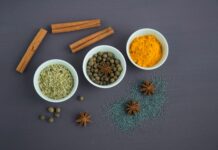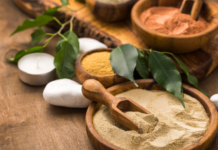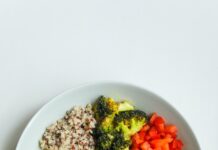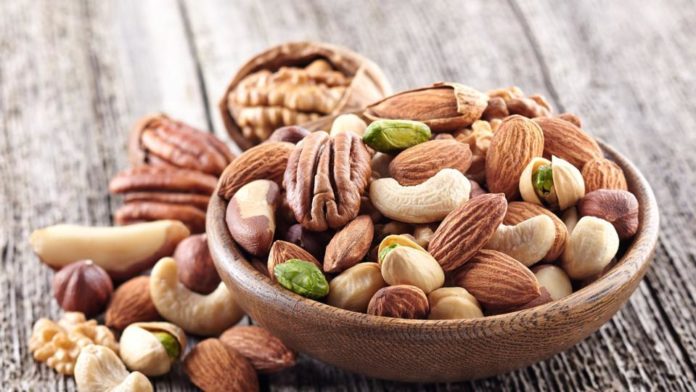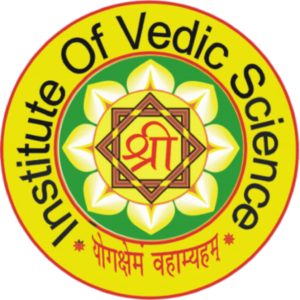Nuts for heart and Weight control
Nuts are calorie rich – almost 200 calories per ounce. More than three-quarters of the calories come from fat, its ‘good unsaturated fat’, not the artery clogging ‘saturated fat.’ In walnuts, 93 % of the fat is unsaturated, in almonds 90%. This is almost close to olive oil – the lingua franca of Mediterranean diet. Unsaturated fats are made up of various fatty acids. Walnuts are rich in alpha-linolenic acid – the higher its level in blood, the lower the risk of stroke. It is converted in the body into omega 3 fatty acid – the same kind that comes from fish oil.
Research indicates that people who consume nuts tend to weigh less than those who don’t munch on nuts. The nut strategy is to avoid nuts as snacks (you may eat large amounts!) but to consider them as part of the planned meal. Better still, substitute nuts for foods rich in saturated fats. Nuts are quite filling and they satisfy your appetite fast. If you happen to gain weight by eating lots of nuts, that’s bad for your heart.
A number of studies have extolled nut’s virtues and have brought a better understanding of its benefits. Some nuts in the US are now allowed to have FDA approved labels mentioning the heart benefits of the nuts. Besides healthy fats for the heart, nuts come packed with folate and B vitamins which lower the blood levels of homocysteine. Minerals like copper, potassium and magnesium are closely linked to heart health. Vitamin E is also cardioprotective. Phytochemicals like sterols, ellagic acid, polyphenols, and saponins may act as antioxidants and lower the cholesterol level. Nuts have lots of arginines, which helps in nitric oxide production leading to healthy artery walls which becomes more flexible and less prone to blood clots.
What type of nuts to eat
MOST NUTS APPEAR to be healthy, some more than others. However, don’t expect much from sugar, salt or chocolate coated nuts.
As saatvic food which refers to the best and acceptable to all. It helps to produce ojas – the finest byproduct of digestion.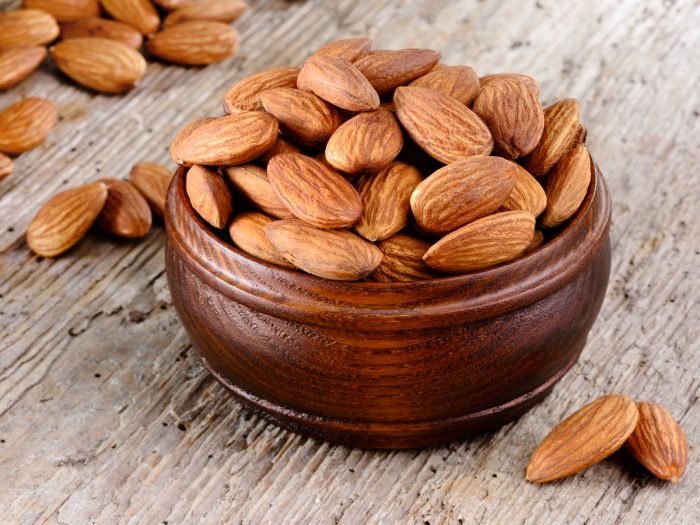
Almonds: Though high in calories, almonds are a treasure trove of protective compounds, particularly for the heart. It is the richest source of calcium and vitamin E (35 % of the daily recommended value for vitamin E) as well as fiber and arginine. To get more almonds in your diet, try drinking them. Natural almond milk is a dairy alternative that’s high in protein, fortified with vitamins A, D, E and a good source of calcium and 100 % lactose and cholesterol free. Ayurveda recommends blanching them. Soaking also helps their digestibility. The best option is to soak them overnight and peel them off in the morning. According to Ayurveda, almonds should not eaten by themselves on an empty stomach but always mixed with other foods like milk, dates, grain or vegetables. Ayurveda classifies it
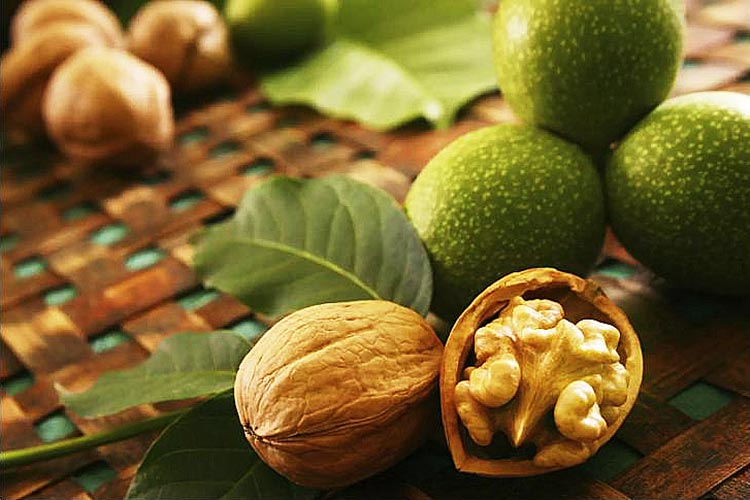
Walnuts: One of the most extensively studied nuts. It is the richest source of heart healthy alpha-linolenic acid (an omega – 3 fatty acid). Research recently published in the Journal of the American College of Cardiology has shown that eating a handful of walnuts can reverse the changes in the inner lining (endothelium) of arteries, associated with the development of atherosclerosis. Ayurveda recommends one walnut a day for children for its brain nourishing qualities. In Chinese medicine walnuts are known as the ‘longevity fruit’ and an excellent food to nourish the kidneys.
Pistachios & Sesame Seeds: According to a study appearing in the Journal of Agriculture and Food Chemistry, pistachious and sesame seeds contain more cholesterol reducing compounds than most other nuts and seeds. Besides antioxidant lutein, Pistachios are rich in magnesium, copper, iron and vitamins B and E which are great for glowing skin.
Brazil Nuts: Best sources of selenium, magnesium and thiamine. Due to its high oil content they do not keep well for long and are the first to go off in unfavorable conditions.
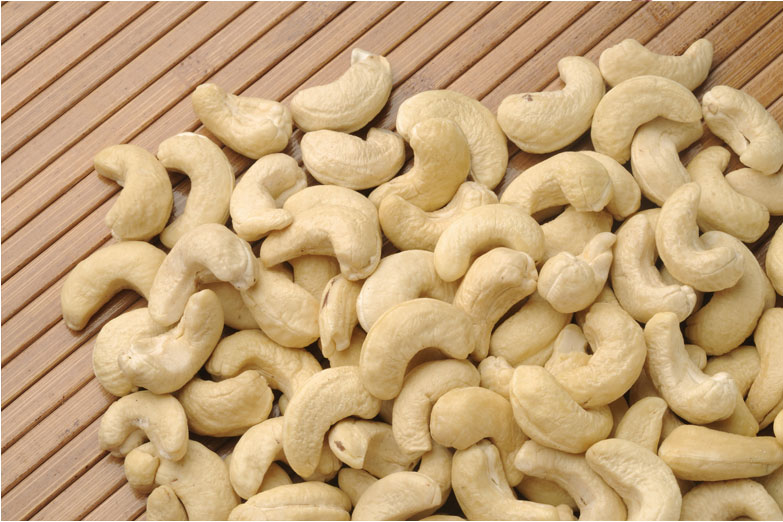
Cashew Nuts: Contains a toxic oil called cardol between the inner and outer shell which can be purged by cracking the nuts and roasting them. It is a good source of manganese and also rich in vitamin, K, and B, especially thiamine. It is good for those who suffer from anaemia or trying to improve their immune system as it is rich in iron, calcium phosphorus and zinc.
Chestnuts: The least of calories, fat and protein but high in carbohydrates.
Macadamia Nuts: Expect the most calories and fat and its expensive too. Eating Macadamia nuts reduces cholesterol levels in men, according to the Journal of Nutrition.
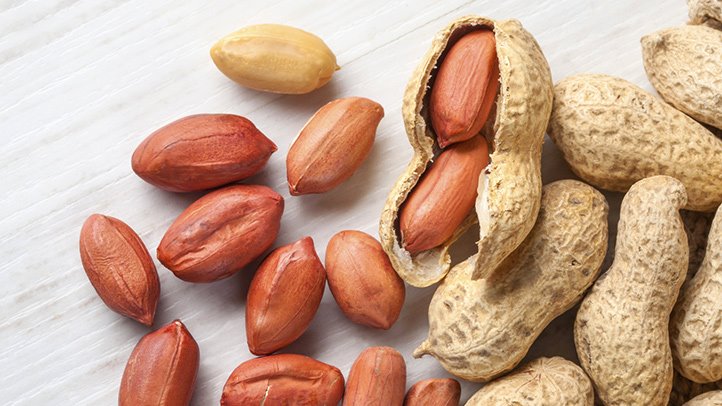
Peanuts: They are not true nuts but legumes. However its nutritive composition, texture and flavor are so similar to nuts that it seems to have changed families. They contain a beneficial compound-resveratrol. Research indicates that the humble peanut is actually a super food packed with vitamin E and the ‘good’ fats that can help to eliminate cancer risks protect your heart and shed inches. When it comes to antioxidants, peanuts are richer than apples, carrots and even beetroots. However, Ayurveda does not recommend them as they are difficult to digest which makes you feel sluggish and lethargic in body and mind.


